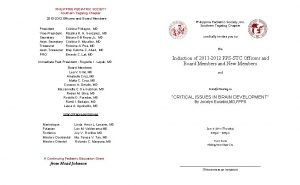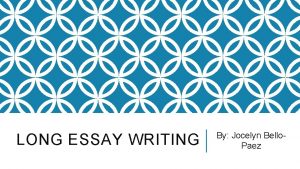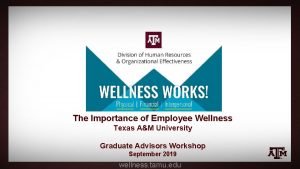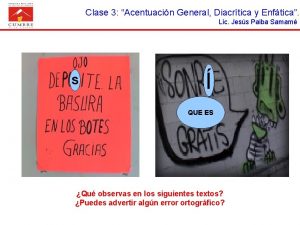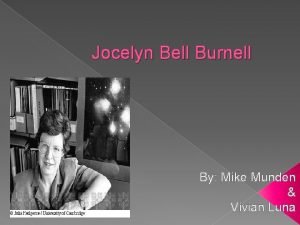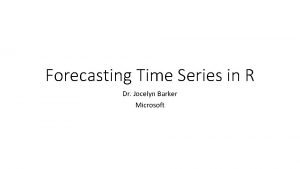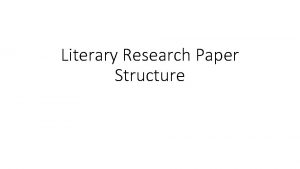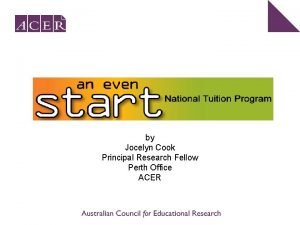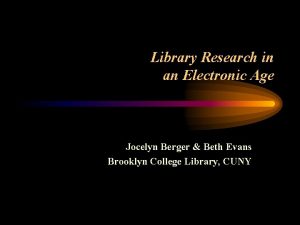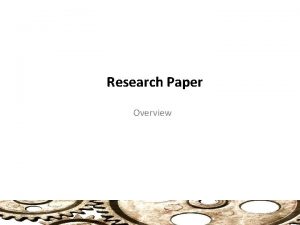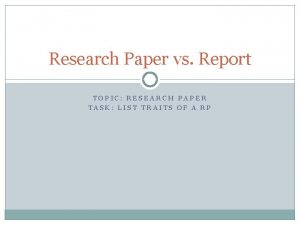Research Paper Jocelyn Maleniza Structure of Research Paper












- Slides: 12

Research Paper Jocelyn Maleniza

Structure of Research Paper • Introduction • Background: 1 or 2 paragraphs • 4 Body paragraphs: length of each body paragraph is no more than 1 page • Conclusion Total paragraphs: 7 -8

1. Introduction • Hook (required): grabs the reader’s attention – i. e. , a famous quotation, an anecdote, a question, statistics, an interesting piece of information, etc. • Introductory Sentence: answers the general purpose or theme of why you are writing the essay • Topic Sentence: introduce your specific topic + a comment about the relationship of the topic to theme and purpose of the essay • Thesis Statement: the opinion that is being taken on the issue/topic along with an academic concept/idea to give the essay focus and Roadmap (causes or effects)

Thesis Statement (PTOCR) P: Considers a specific perspective (academic): perspective (educational, psychological, socioeconomic) one to two T: Limits the topic – one specific topic O: Develops an opinion – take one side. To test for opinion, ask yourself, “would everyone agree? ”. If the answer is “No”, then you have opinion. C: Connects with a concept – an academic idea/concept is included in the development of the opinion R: Lists the roadmap of support- key words for each body paragraph

Thesis Statement (PTOCR) Thesis Statement Pattern: From a _____ perspective, specific topic + your opinion + connection to another concept (BECAUSE) + roadmap (THROUGH, IN, WITH, BY) Example 1: From an anthropological perspective orphan care in Haiti must focus on nurturing because complex cultural patterns continue to put children at risk through abandonment, desperation, imprisonment, and slavery. 1 2 3 4 EFFECTS

Thesis Statement (PTOCR) Thesis Statement Pattern: From a _____ perspective, specific topic + your opinion + connection to another concept (BECAUSE) + roadmap (THROUGH, IN, WITH, BY) Example 2: From a psychological perspective, the issue of sexual harassment in the United States needs a legal reform because the authority’s tendency to distrust personal testimonies of victims through the “he-said-she-said” mentality (1), the lack of DNA testing (2), the low ratio of claims being led to arrest (3), and the lack of convictions in the criminal courts (4). CAUSE

2. Background Paragraph Common Features: • Generally shorter than a body paragraph. • Define the main topic and be researched (i. e. , in-text citations) and uses factual information (descriptive information about the topic not opinion about topic). • Quotes used are paraphrased. • Generally information comes from several sources • The last sentence at the end of the background transitions from the background information to thesis.

Steps to writing a background paragraph 1. As you research make notes of the most valuable factual information for understanding the topic. 2. Pretend your reader has no knowledge of your topic. What information would they need to generally understand what it is and how it relates to your opinion/reasons. 3. Choose 3 -4 of the most valuable/key information. 4. Use transitions words such as “Moreover”, “In addition”, “Additionally”, and “Consequently” to move smoothly from one point to another. 5. The last sentence is a “Transition Sentence”. Using a synonym of thesis key word, transition to the body paragraphs by rephrasing thesis in a different, more simplified way. DO NOT restate thesis exactly and DO NOT restate the Roadmap (paragraph key words).

Background Paragraph 1 General 1. An overview of the history of your general topic, such as the different perspectives on the issue. Example T. S. #1: general topic is orphan care 2. Key definitions. 3. A definition of your perspective of the general topic, also called a premise. For example, “All children have a right to a family”. Explain your premise. 4. If only writing 1 background para. , then last sentence is “Transition Sentence” –see point #5 in slide 8. 5. If writing 2 background para. , last sentence is transition to the specific topic. For example, orphan care in Haiti. 6. If only writing 1 background paragraph (6 -9 sentences). If writing 2 background paragraphs (each paragraph 4 -6 sentences)

Background Paragraph 2 (optional) Specific It focuses on your actual topic – orphan care in Haiti. For example, ”All children have a right to a family. ” The rest of the paragraph would then provide: 1. Background facts, numbers, and other information of the situation you will analyze, such as the number of children who are orphaned, the different kinds of orphans, and the number of children who live on the streets. 2. A summary of the situation, such as a story of chronology of the last two decades of the orphan situation in Haiti. 3. The specific perspective or definition that you will follow, such as the value of nurturing in child development. 4. Last sentence is Transition Sentence – see #5 in slide 8.

3. 4 Body Paragraphs • Follows the general paragraph patterns, using key/transition words, introducing main evidence with context, and including sufficient focused discussion. • The paragraph includes two main pieces of evidence organized deductively (general to specific), and 1 -2 pieces of supporting evidence that are included as citations in the explanation/discussion sections of the body paragraph. Supporting evidence is PARAPHRASED and doesn’t have to be introduced with context. • A body paragraph is not more than one page in length.

4. Conclusion • Concise (3 -5 sentences) • Restate your argument/thesis in a fresh way using some different words (synonyms) and different sentence structures • You can include some of the limitations of your research. • You can end with a strong statement that leaves the reader thinking. • DO NOT offer solutions, suggestions, or recommendations.
